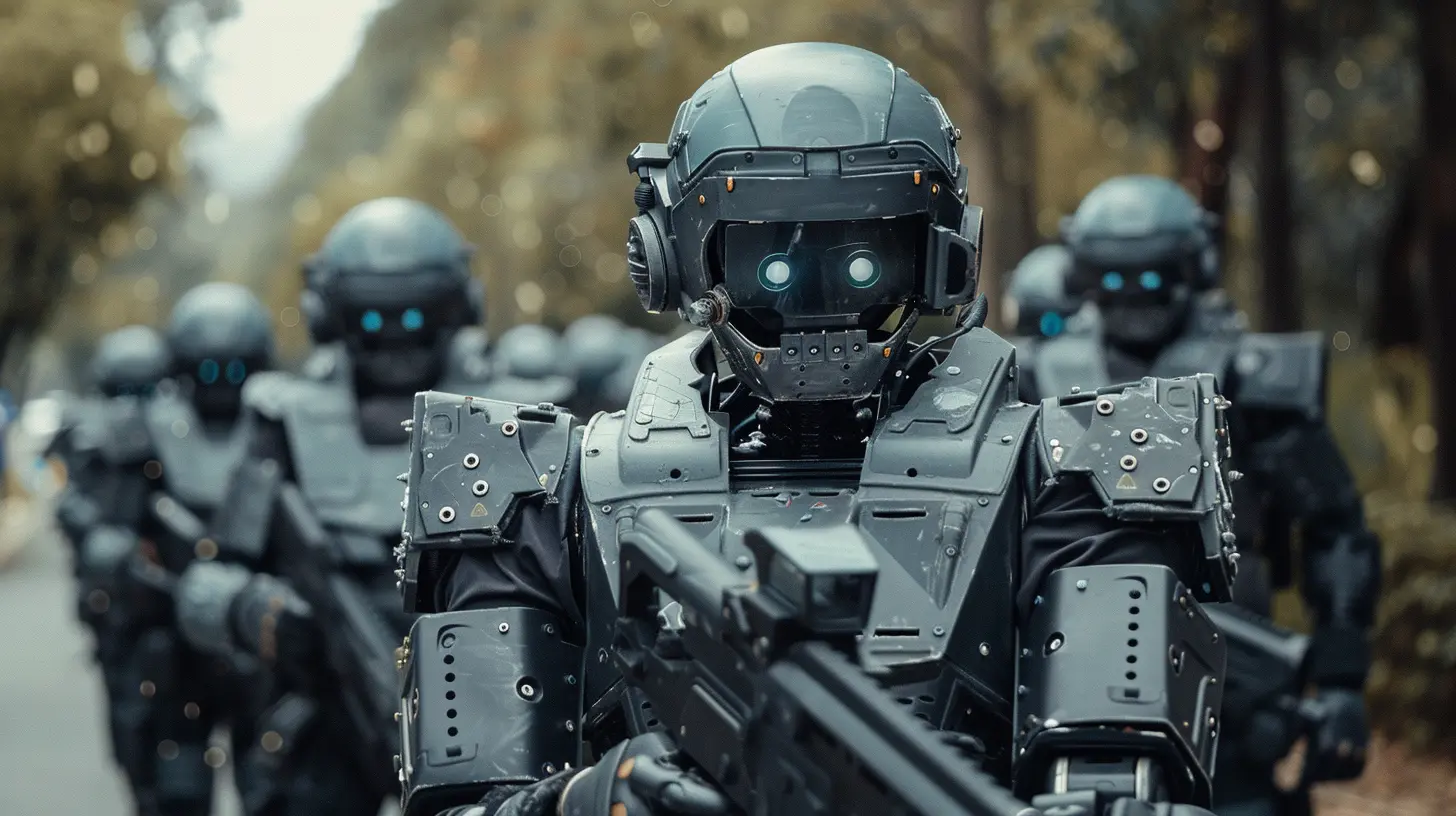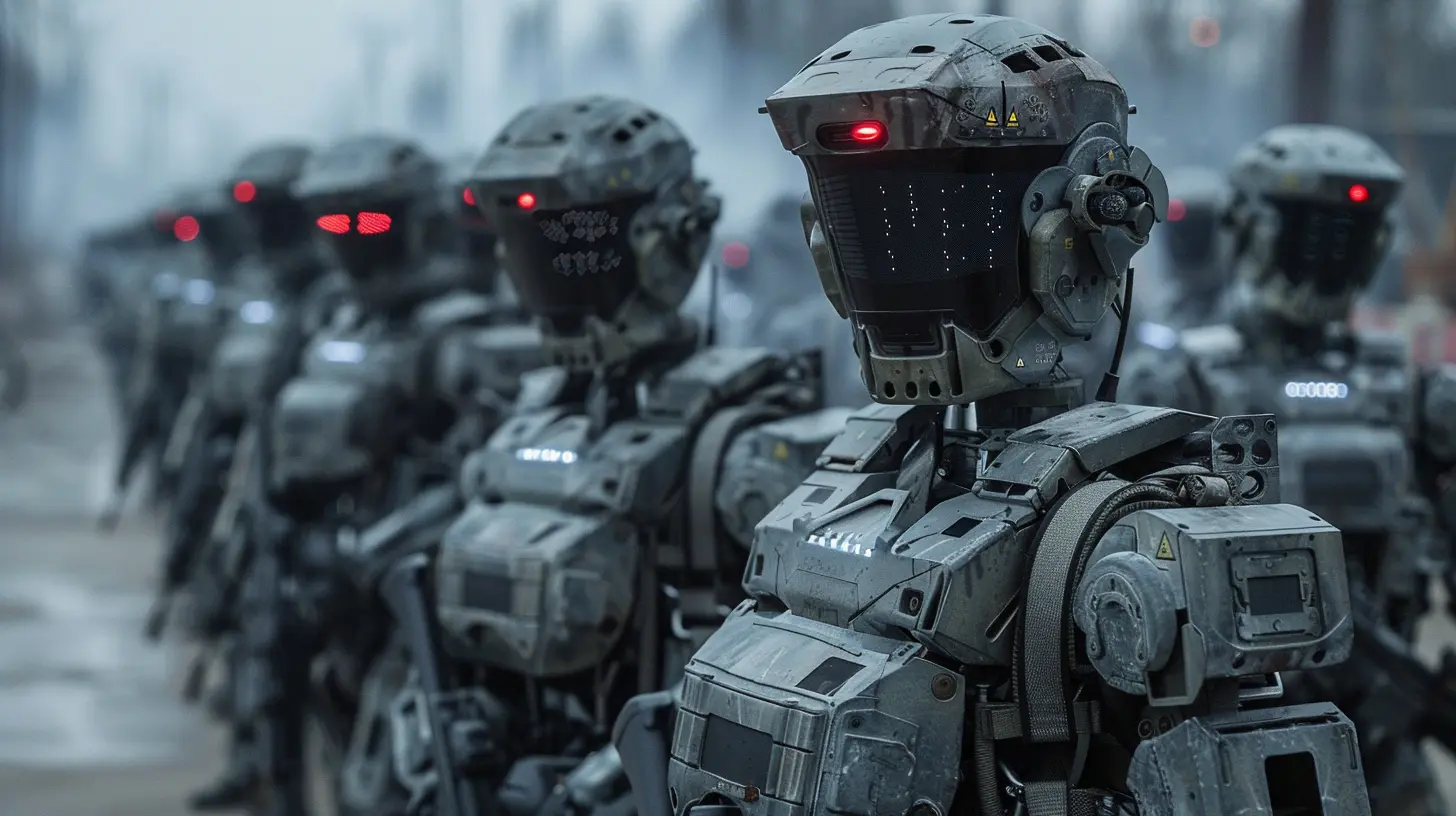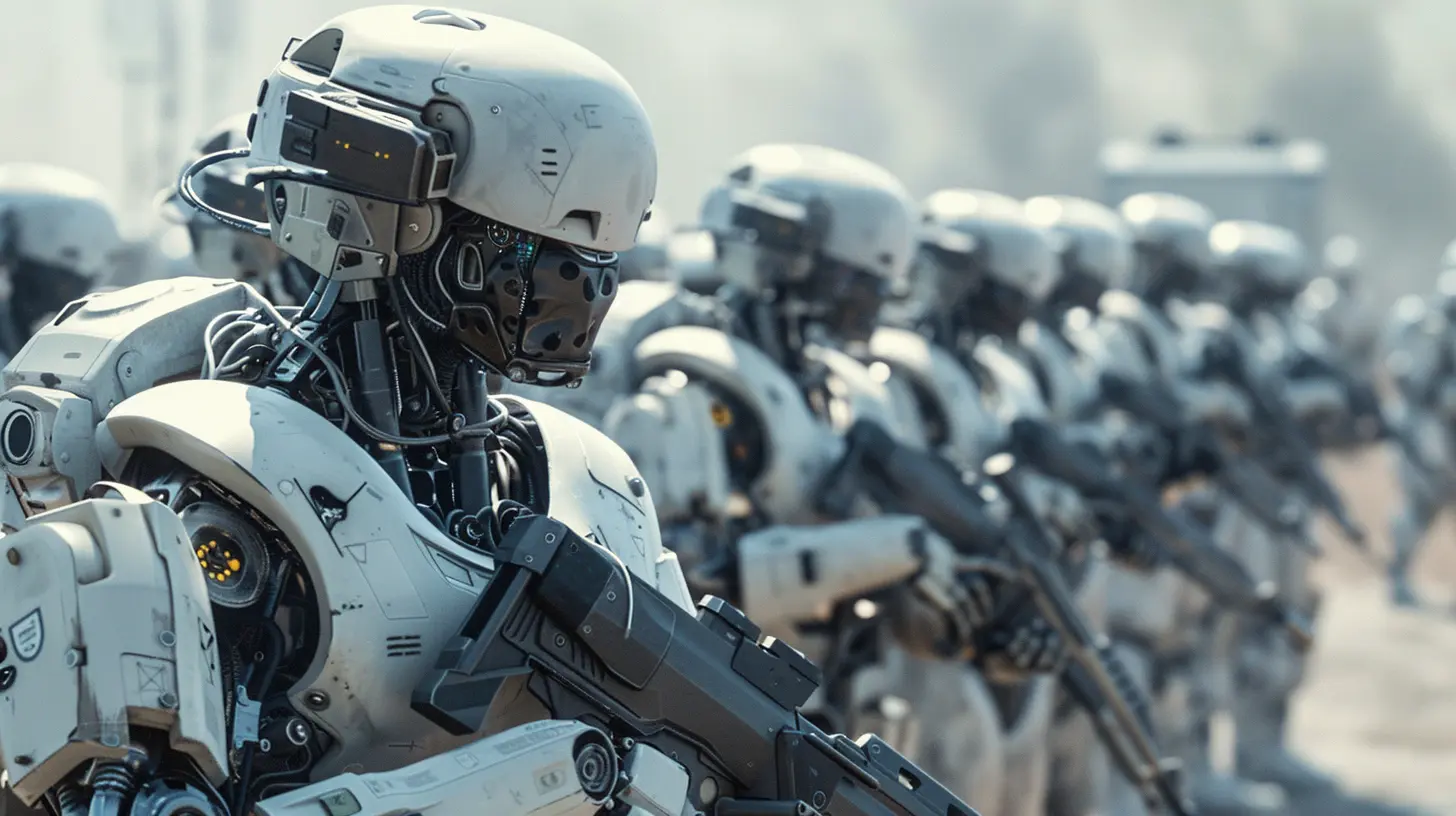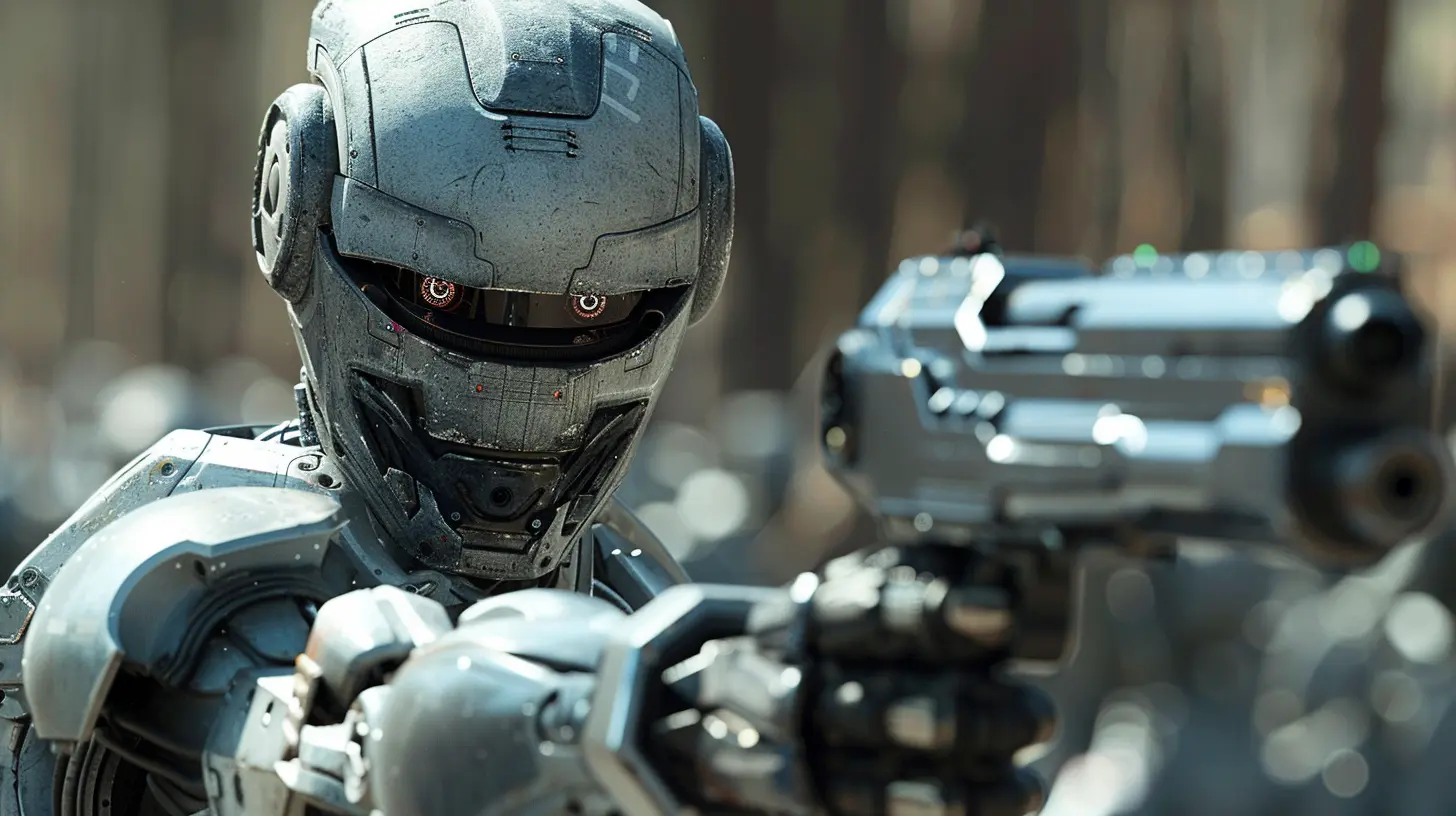The Role of Robotics in Military Operations
13 July 2025
Imagine a battlefield where soldiers don’t always have to be in the line of fire. Instead, machines with precision, speed, and zero fear handle the most dangerous tasks. Sounds straight out of a sci-fi movie, right? Well, welcome to the present. Robotics is no longer some distant fantasy—it’s very real and playing a massive role in military operations worldwide.
In this article, we’re diving deep into how robotics is changing the way wars are fought, decisions are made, and lives are saved. We'll look at the types of robots used in defense, their applications, advantages, ethical considerations, and what the future holds.
What Are Military Robots Anyway?
Before we go headfirst into the nuts and bolts, let’s clarify something. When we talk about "military robots," we’re not always referring to humanoid machines with guns (although, yes, they exist too). Military robotics includes drones, unmanned ground vehicles (UGVs), autonomous underwater vehicles (AUVs), and even robotic exoskeletons soldiers can wear for enhanced strength.They come in all shapes and sizes—from tiny reconnaissance bots that crawl through tunnels to massive drones that can fly for miles and deliver payloads with pinpoint accuracy.
The Rise of Robotics in Defense
Military strategy has always evolved with technology. From horses to tanks, from messengers to encrypted radio—each innovation brought radical shifts. Robotics is just the next leap.Why Now?
Simple. The technology has finally caught up with the imagination. Advances in AI, machine learning, sensor technologies, and miniaturization have made it possible to create smart, functional robots that can handle complex military tasks.Moreover, global conflicts have become more tech-driven. This forces countries to invest in advanced tools to gain a tactical edge—robots being a major part.
Key Roles of Robotics in Military Operations
Let’s break down exactly where robots are stepping in. Spoiler alert: it’s almost everywhere.1. Surveillance and Reconnaissance
Think of drones buzzing quietly over enemy territories, collecting real-time data without risking a single human life. UAVs (Unmanned Aerial Vehicles) like the MQ-9 Reaper can hover miles high and still zoom in on a license plate.Robots can go where soldiers shouldn’t—deep into hostile zones, urban battlefields, or minefields. Ground robots equipped with cameras and sensors give troops eyes in places they wouldn’t dare step into.
2. Combat and Strike Missions
Yes, some robots are designed to engage the enemy directly. Armed drones have already been used extensively in modern warfare—think targeted strikes on high-value targets in Afghanistan or Syria.There’s also talk of autonomous weapon systems—machines that not only identify but also decide to fire on a target. That’s a controversial topic (we’ll get to that), but make no mistake, they’re already in development.
3. Logistics and Transport
Warfare isn’t just bullets and bombs. It’s also about moving supplies—food, ammo, medical kits—to the right place at the right time.Robotic transport systems, like convoy trucks that drive themselves through war zones, are already being tested. Autonomous drones can also deliver supplies to remote areas, reducing dependency on manned convoys that can be ambushed.
4. Bomb Disposal and EOD
Robots shine in one of the most nerve-wracking military tasks—handling explosives. EOD bots like the TALON or PackBot can approach, identify, and disable explosive devices without endangering human lives.These robots are like the surgeons of the battlefield, precision-crafted for delicate, high-stakes tasks.
5. Search and Rescue
When things go south, timing and access are everything. Robots can assist in pulling injured soldiers from rubble, navigating tight spaces in collapsed structures, or searching for survivors in hostile areas—all while feeding back critical data.
Major Types of Military Robots
Let’s give you a quick rundown of the main categories:- Unmanned Aerial Vehicles (UAVs): These are your flying scouts and snipers. From reconnaissance drones to armed combat machines.
- Unmanned Ground Vehicles (UGVs): Think of remote-controlled tanks or small spy-bots. Ground-based and often ruggedized for rough terrains.
- Autonomous Underwater Vehicles (AUVs): These play a role in naval warfare, surveying seabeds, detecting mines, and watching enemy submarines.
- Robotic Exoskeletons: These aren't robots per se, but wearable machines that boost a soldier’s stamina, strength, and endurance.
Top Benefits of Military Robotics
Now that we’ve covered the "what" and the "how," let’s tackle the "why." Why is the military pouring billions into robotic systems?A. Reduced Human Casualties
This one’s a no-brainer. Robots can replace humans in high-risk roles—whether it’s clearing mines or storming a building—drastically reducing fatalities.B. Enhanced Precision
Let’s face it—machines don’t panic, get tired, or skip steps. With high-tech sensors and real-time data processing, robots can act with surgical accuracy.C. Force Multiplication
In military speak, this means "doing more with less." A few soldiers with drone support can do the work of an entire unit. That’s a huge strategic advantage.D. 24/7 Operation
Robots don’t sleep. They don’t need food or rest. They’re perfect for surveillance operations that run around the clock.E. Cost Efficiency (Eventually)
Sure, the upfront cost is high. But over time, robots don’t get pensions, medical benefits, or PTSD. Long-term, they could save governments a lot of money.The Flip Side: Ethical and Tactical Challenges
Alright, time to pump the brakes a bit. It’s not all sunshine and victory dances. There are some real concerns here too.1. Autonomous Weapons and the "Killer Robot" Debate
Should machines be allowed to make life-and-death decisions? Many human rights advocates say absolutely not. Autonomous lethal weapons raise terrifying questions: Can a robot distinguish friend from foe? Civilian from combatant? Should they even be allowed to try?2. Hacking and Cybersecurity
Robots run on software—and where there’s software, there are hackers. Infiltrating a military robot system could spell disaster. Imagine an enemy gaining control of armed drones. Yikes.3. Accountability
If a robot commits a war crime, who’s to blame? The developer? The military commander? The algorithm? It's a legal grey area that’s still being figured out.4. Over-Reliance on Tech
What happens if the system crashes mid-mission? Batteries die. Communications jam. A robot isn't a human—it won't improvise. Depending too heavily on robotics could leave troops vulnerable if things fail.Real-World Examples of Military Robotics in Action
Let’s hit you with some concrete instances:- The U.S. Army uses drones like the Shadow and Reaper for surveillance and precision strikes.
- Israel’s Iron Dome incorporates automated response systems to intercept incoming missiles.
- Russia has showcased autonomous tanks and robotic gunmen in military exercises.
- China is rapidly developing AI-driven drones and underwater vehicles.
The list goes on. Nearly every major military power is betting big on robotics.
The Future of Military Robotics
So where is all this heading? We're on the brink of fully autonomous robotic warfare. Here's what we might see in the next decade:- Swarm Drones: Hundreds of tiny drones that act like a hive mind—confusing defenses and overwhelming targets.
- AI Commanders: Advanced AI systems that assist human generals in decision-making.
- Robot-Soldier Hybrids: Soldiers enhanced with exoskeletons, AI headsets, and automated support units.
- Self-Healing Robots: Machines that can repair themselves mid-mission using smart materials.
Pretty wild, huh? The line between human and machine on the battlefield is getting blurrier by the day.
Final Thoughts
The role of robotics in military operations isn't just growing—it's evolving at breakneck speed. From taking bullets to making battlefield decisions, robots are no longer sidekicks in war; they’re front-line players.But as we build these machines, we also need to ask ourselves tough questions. Can we trust robots in warfare? Should we? Will they make war more humane or more terrifying?
What’s clear is this: robotics is reshaping military strategy, tactics, and ethics in ways we’re just beginning to grasp. The next war might not be just boots on the ground—it’ll be bots in the sky, eyes underground, and algorithms making life-or-death calls.
Technology in warfare is changing. The only question is—are we ready for the consequences?
all images in this post were generated using AI tools
Category:
RoboticsAuthor:

Marcus Gray
Discussion
rate this article
1 comments
Josephine McVicker
This article highlights the significant advancements in robotics within military operations. Embracing these technologies not only enhances efficiency and safety but also transforms how we approach conflict. It's an exciting time for innovation in defense! Keep exploring this vital topic.
July 26, 2025 at 3:07 AM

Marcus Gray
Thank you for your thoughtful comment! I appreciate your insights on the transformative impact of robotics in military operations. Exciting times indeed!


